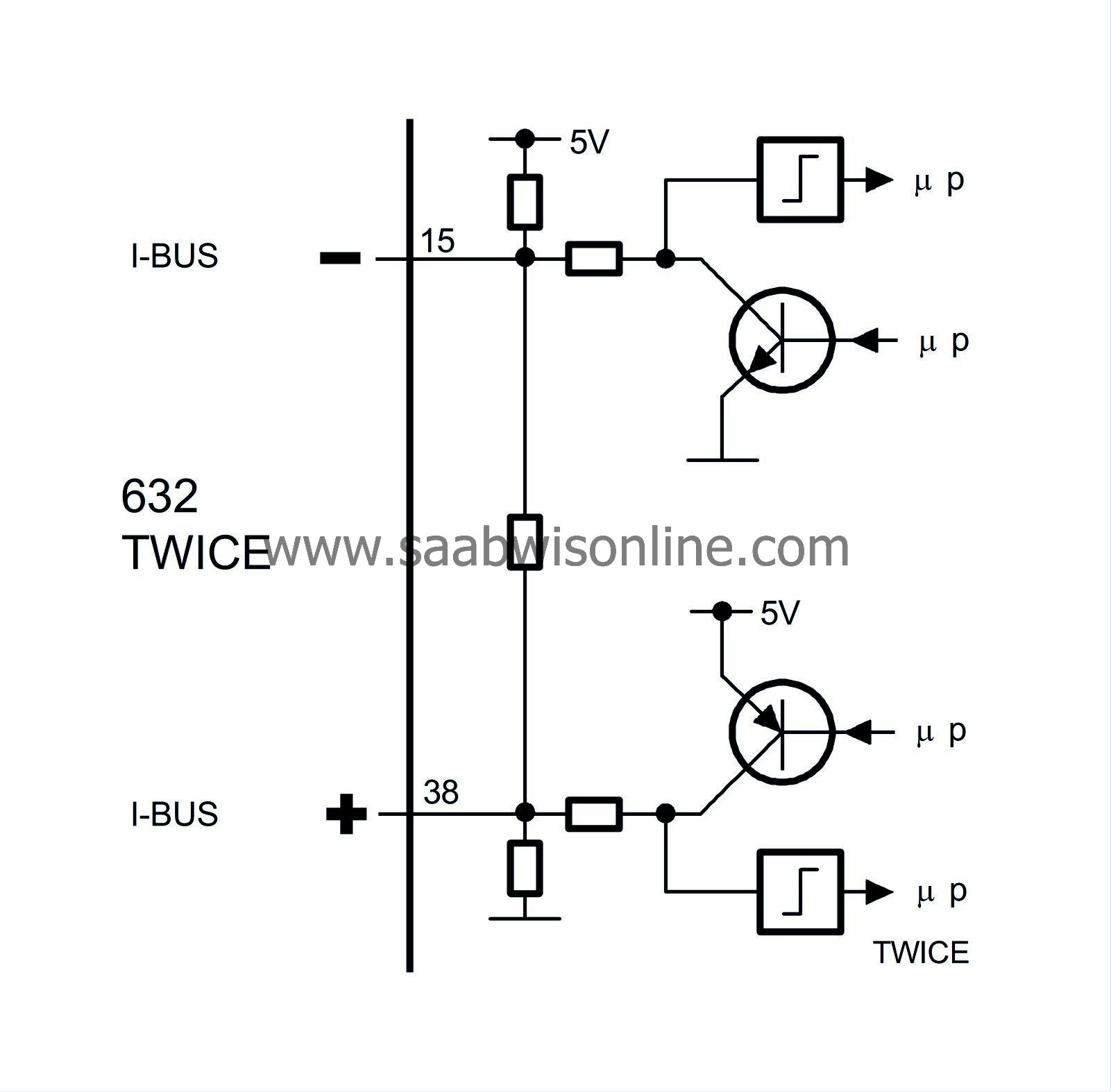Bus communication
| Bus communication |
| • |
Trionic, engine management system (TRIONIC)
|
|
| • |
TCM (Transmission Control Module), control module for automatic transmission (502)
|
|
| • |
TC/ABS, (Traction Control) (382)
|
|
| • |
P-bus (Powertrain bus)
|
|
| • |
MIU (Main Instrument Unit) (540)
|
|
| • |
I-bus (Instrument bus)
|
|
| • |
SID (Saab Information Display) (541)
|
|
| • |
TWICE (Theft Warning Integrated Central Electronics) (632)
|
|
| • |
ACC (Automatic Climate Control) (216)
|
|
| • |
Audio system, main unit (353)
|
|
| • |
CDC (CD changer) (355)
|
|
| • |
PSM (Power Seat Memory) (357Dk)
|
|
| • |
PMM (Power Mirror Memory) (611)
|
|
| • |
DICE (Dashboard Integrated Central Electronics) (628)
|
|
| • |
Data link connector (H16-5/445)
|
|
| • |
Airbag (SRS) (331)
|
|
| • |
ABS (Anti Block System) (547)/TC-ABS (382)
|
|
| • |
SPA (Saab Parking Assistance) (630)
|
|
| P-bus and I-bus |

A bus is understood to be the leads over which information is sent digitally and serially. Digital means that the voltage difference between the leads has only two values, roughly 0 V and 5 V. The information is coded so that different combinations of 0 V and 5 V pulses have different meanings.
Serial means that the information is sent in ”packets” which are transmitted one after the other in rapid succession.
All control modules in the Saab 9-5 are connected to the bus with the exception of ABS and SRS. For cars with Traction Control, the TC/ABS control module is connected to the P-bus.
The buses consist of a P-bus (Powertrain Bus) and an I-bus (Instrument Bus). Both buses are connected to the MIU (Main Instrument Unit). The buses are electrically isolated from each other.
The diagnostic tool is not connected directly to the bus but communicates via the DICE, one of the control modules connected to the I-bus, and so has access to all control modules connected to the bus.
The data transfer rate of the P-bus is ten times faster than that of the I-bus. The reason for this is that the powertrain systems need information with the least possible delay, as for example when providing air mass compensation when the selector lever is moved from N to D or torque limitation in connection with gear changing.
All the information sent from one control module is accessible for all other control modules on the bus. The MIU is responsible for ensuring that information available on one bus is also available on the other bus.
The control modules send out information on the bus at regular intervals. The time between two transmissions depends on the information being sent and varies between 10 milliseconds (0.010 seconds) and 1 second. Information is also sent out by the control modules whenever the information changes.
The transfer of information between control modules takes place on two leads, bus+ (green lead) and bus- (white lead). The leads are twisted to reduce susceptibility to electrical interference.
| TWICE uses the following information for the theft protection |
| TWICE sends the following information for the theft protection |





